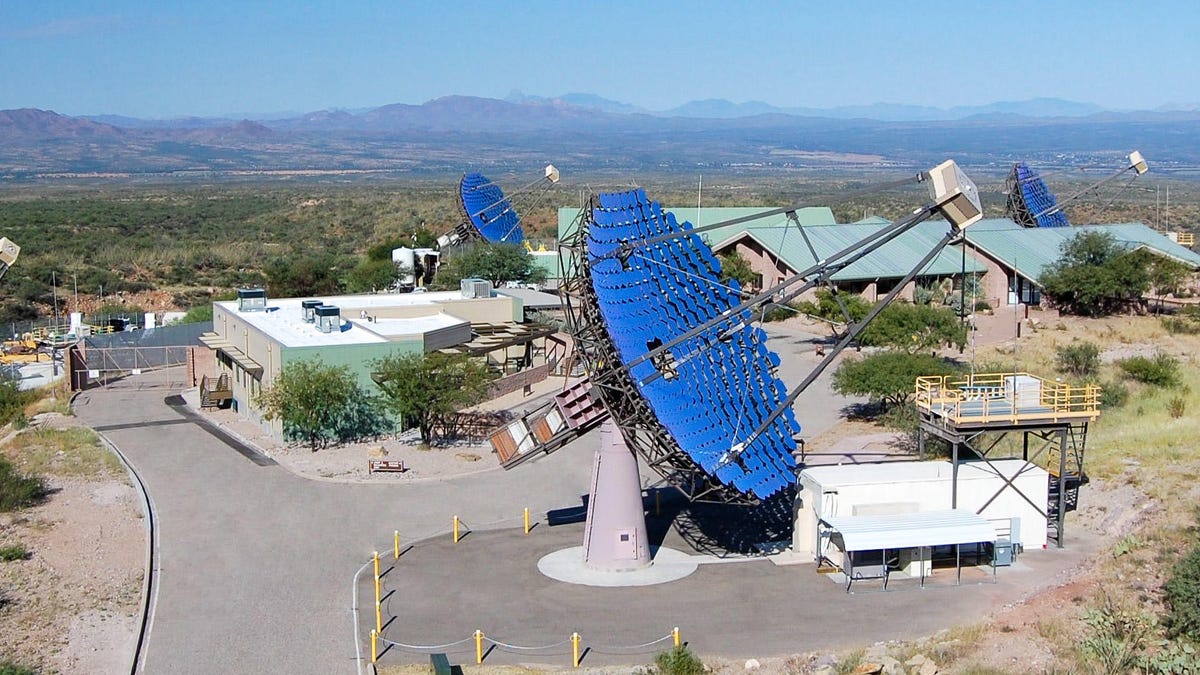Veritas telescope could spot alien light pulses for Breakthrough Listen project
The telescope array in Arizona isn't just about black holes and quasars anymore.

The Veritas telescope array, designed to spot evidence of gamma rays, now also will feed data to the Breakthrough Listen project to detect alien chatter.
Breakthrough Listen, an effort to hear signals from distant aliens, has a new set of ears. A quartet of linked telescopes in Arizona called Veritas will check for fleeting flashes of light that could indicate a distant civilization, the two organizations said Wednesday.
Veritas, short for Very Energetic Radiation Imaging Telescope Array System, is designed to spot super-short blue-light flashes called Cherenkov radiation that indicate a very high-energy gamma ray has struck Earth's atmosphere. For scientists, that's a good way to study high-energy astronomical events like supernovas, pulsars and black holes.
But because it can spot light signals lasting only billionths of a second, Veritas also could be good for seeing any pulses of light aliens living light-years away are sending our way, intentionally or not.
"When it comes to intelligent life beyond Earth, we don't know where it exists or how it communicates. So our philosophy is to look in as many places, and in as many ways, as we can," said Yuri Milner, the wealthy tech investor who founded the Breakthrough Initiatives, in a statement. Breakthrough Listen seeks to survey the million stars nearest our own in the Milky Way and already scans some radio and optical frequencies.
A related project, Breakthrough Starshot, seeks to use a massively powerful laser array to blast tiny spacecraft to nearby stars where they can take photos and gather other data to beam back to earth by laser.

